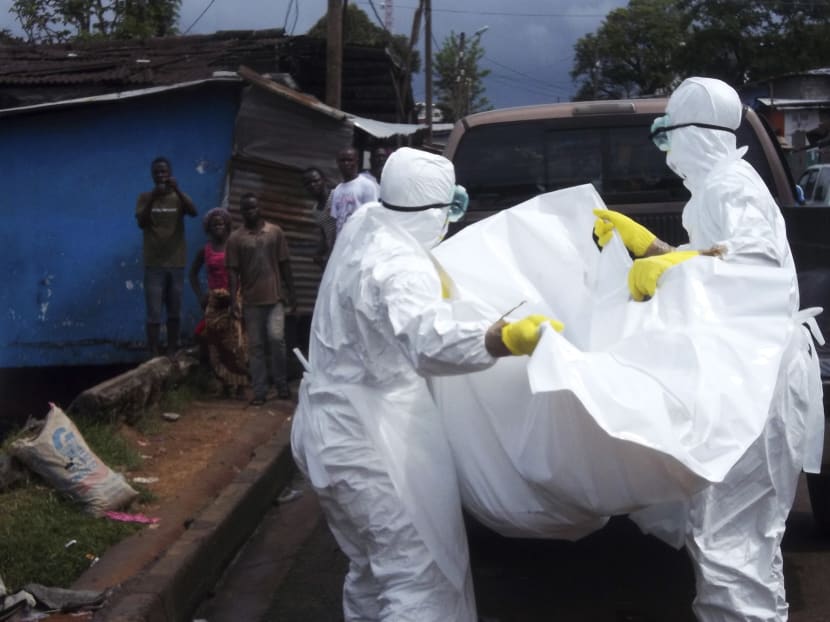Ebola decline in Liberia could be real trend: WHO
DAKAR (Senegal) — The rate of new Ebola infections in Liberia appears to be declining and could represent a real trend, the World Health Organization said today (Oct 29), but the epidemic is far from over.

Health workers remove the body of a man believed to have died from the Ebola virus at a street in Monrovia, Liberia, Oct 27, 2014. Photo: Reuters
DAKAR (Senegal) — The rate of new Ebola infections in Liberia appears to be declining and could represent a real trend, the World Health Organization said today (Oct 29), but the epidemic is far from over.
There are empty beds in treatment centres and the number of burials in the country has declined, Dr Bruce Aylward, the assistant director-general for WHO, told reporters. He said there may be as much as a 25 per cent week-on-week reduction in cases in Liberia. But experts are still trying to ensure their data is reliable.
Throughout the Ebola outbreak, WHO has warned that its data have been incomplete and the number of cases are likely vastly underreported. That is still a concern, Dr Aylward said, but the trend nonetheless appears to be real.
So far, more than 13,600 people have been sickened in the outbreak, which has hit Liberia, Guinea and Sierra Leone hardest.
“The epidemic (in Liberia) may be slowing down,” Dr Aylward said. But he cautioned: “A slight decline in cases in a few days versus getting this thing closed out is a completely different ball game.”
Liberia’s Red Cross said yesterday that teams collected 117 bodies last week from the county that includes Monrovia, down from the high of 315 last month.
International Federation of the Red Cross spokesman Benoit Carpentier warned that it was too early to celebrate those numbers, saying Ebola outbreaks come in waves. He noted that Red Cross figures show deaths are still increasing outside Monrovia.
Several times throughout this outbreak, including in Liberia, officials have thought the disease’s spread was slowing, only to surge again later. They have often blamed those false lulls on cases being hidden because people were too afraid to seek treatment, wanted to bury their relatives themselves or simply weren’t in contact with authorities.
Dr Aylward said that this is not the time to let up: The response has to continue going full bore.
“I’m terrified the information will be misinterpreted,’’ he said, and the international response will slow.
Dr Aylward said the danger now “is that we will end up with an oscillating pattern where the disease moves up and down”. AP






